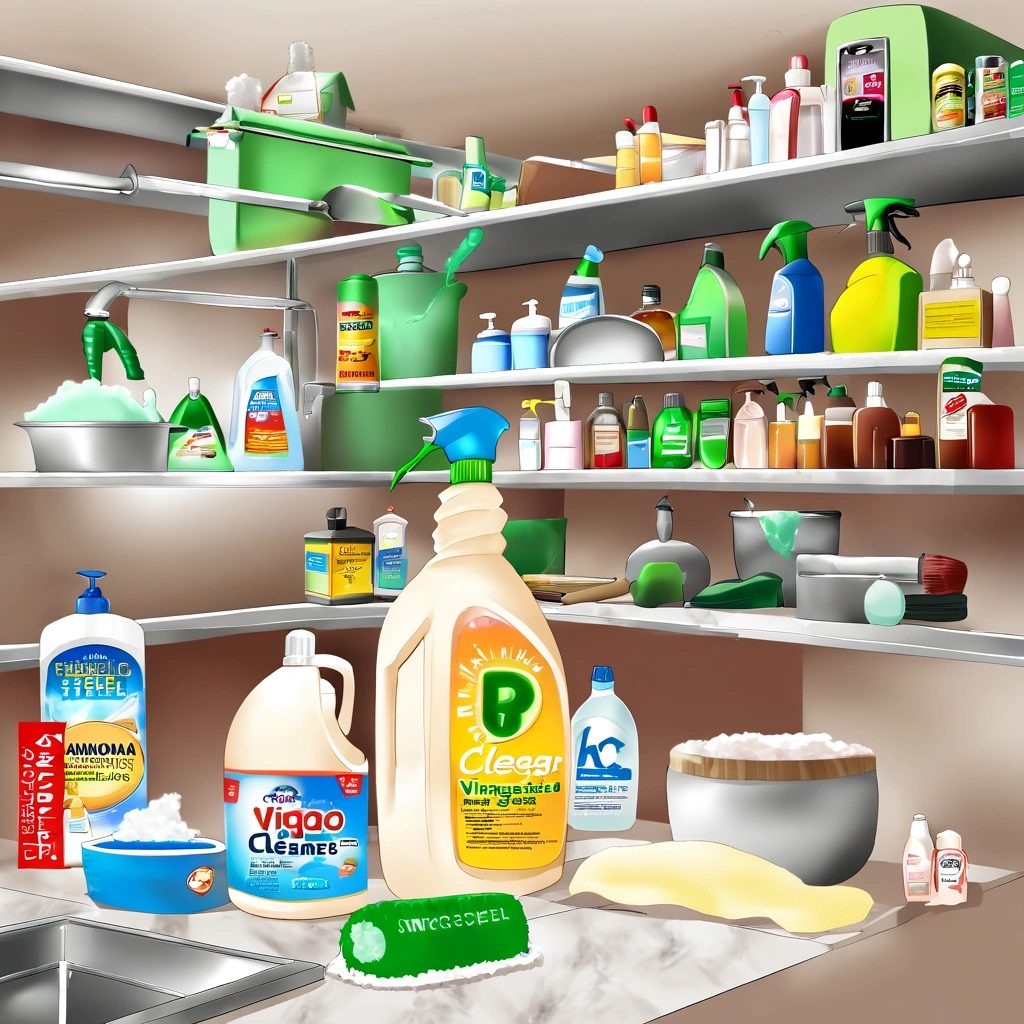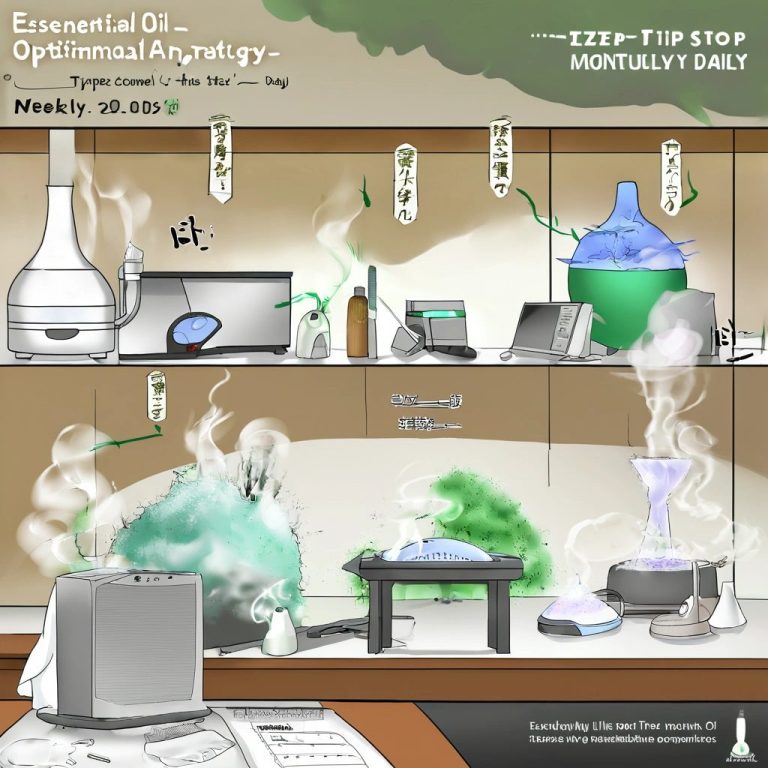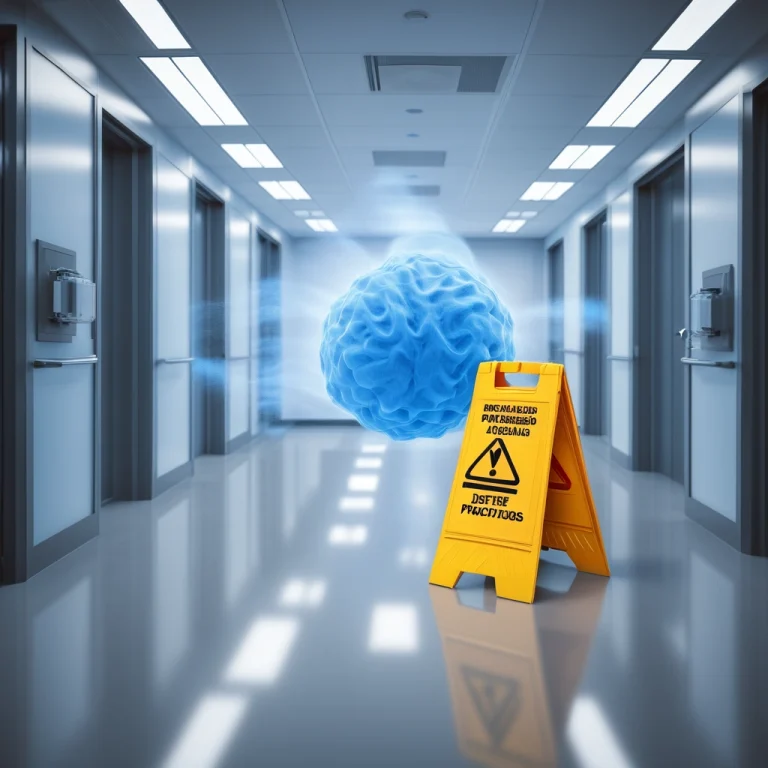Understanding Cleaning Product Compatibility: A Practical Guide to Material Reaction Testing
The Hidden Dangers of Cleaning: A Compatibility Guide
In the realm of household upkeep, a silent battle rages – the unseen interaction between cleaning agents and the very surfaces they’re meant to purify. We’ve all been there: a quick spritz of cleaner followed by a nagging doubt. Will it stain? Will it corrode? The quest for a spotless home shouldn’t turn into a chemistry experiment gone wrong. This guide, informed by meticulous testing and practical experience, aims to demystify the often-overlooked science of cleaning product compatibility.
We delve into the potential reactions between 15 common household cleaners and everyday materials, offering a roadmap for safer, more effective cleaning practices. Understanding these interactions is not just about preserving the aesthetics of your home; it’s about safeguarding your health and preventing costly damage. This isn’t just about cleaning; it’s about informed stewardship of your living space. The modern home presents a diverse array of surfaces, from delicate natural stone like granite to engineered materials and various wood finishes, each with unique vulnerabilities.
The improper use of household cleaners, particularly potent agents like bleach, vinegar, or ammonia, can lead to irreversible surface damage. Consumer Reports consistently highlights the importance of reading labels and understanding the chemical composition of cleaning products. Many homeowners, in their pursuit of efficiency, overlook the critical need for cleaning product safety, potentially compromising the integrity of their investments. Understanding cleaning product compatibility is paramount to avoiding such pitfalls. Selecting the right stainless steel cleaner for your appliances or a specialized wood cleaner for your furniture can significantly extend their lifespan.
Material reaction testing is an essential, yet often neglected, aspect of responsible home maintenance. This proactive approach allows homeowners to assess the potential for adverse reactions before widespread application, preventing costly repairs and ensuring the longevity of valuable surfaces. For instance, using an acidic cleaner on marble can etch the surface, while abrasive cleaners can scratch delicate finishes. This guide offers practical cleaning tips to navigate the complexities of cleaning product safety, empowering homeowners to make informed decisions.
From understanding the nuances of cleaning product compatibility to implementing safe cleaning products, this resource provides the knowledge necessary to maintain a beautiful and damage-free home. Beyond aesthetics and material preservation, the implications of cleaning product compatibility extend to human health. The off-gassing of volatile organic compounds (VOCs) from incompatible cleaning product combinations can create harmful indoor air quality. Furthermore, the degradation of surfaces can release microplastics and other particles into the environment. Therefore, a comprehensive understanding of cleaning product safety is not merely a matter of home improvement; it’s an integral component of responsible environmental stewardship and safeguarding the well-being of your family. By prioritizing informed choices and adhering to best practices, we can create healthier and more sustainable living spaces.
Material Reaction Testing: A Step-by-Step Guide
The cornerstone of responsible cleaning lies in understanding the potential for adverse reactions between cleaning products and the materials they contact. This section outlines a structured methodology for conducting material reaction tests, ensuring both safety and accurate results. Before commencing any testing, gather the necessary materials: the 15 selected cleaning products (bleach, vinegar, ammonia, dish soap, multi-surface cleaner, baking soda paste, rubbing alcohol, hydrogen peroxide, glass cleaner, toilet bowl cleaner, drain cleaner, wood cleaner, granite cleaner, stainless steel cleaner, and oil-based soap), samples of common household materials (stainless steel, plastic, wood, granite, fabric, ceramic tile, glass, painted surfaces, chrome, grout, aluminum, copper, rubber, vinyl flooring, and laminate), personal protective equipment (gloves, eye protection, and a well-ventilated workspace), small containers or beakers, application tools (cotton swabs, sponges, or cloths), distilled water for rinsing, and a notebook for meticulous documentation.
Begin by labeling each material sample clearly. Apply a small, controlled amount of each cleaning product to a designated area on each sample. It is crucial to use undiluted cleaners as this represents a worst-case scenario. Observe the samples immediately after application and at regular intervals (e.g., 1 hour, 6 hours, 24 hours, and 72 hours). Document any changes, including discoloration, staining, etching, corrosion, softening, swelling, or any other visible alterations. After each observation period, rinse the sample thoroughly with distilled water and allow it to dry completely before further examination.
Safety is paramount. Always wear gloves and eye protection to prevent skin and eye irritation. Work in a well-ventilated area to avoid inhaling fumes, especially when testing ammonia or bleach. Never mix cleaning products, as this can create hazardous gases. Dispose of used cleaning products and contaminated materials properly according to local regulations. Thorough documentation is essential for accurate analysis. Record the name of the cleaning product, the material tested, the date and time of application, and detailed observations at each interval.
Photographs can be invaluable for visually documenting any changes. Control samples (materials exposed to distilled water only) should be used as a benchmark for comparison. This rigorous testing process will provide a solid foundation for understanding the compatibility of cleaning products with various household materials. Expanding on the necessity of meticulous documentation, consider employing a standardized scoring system to quantify observed reactions. For example, a scale of 1 to 5 could represent the severity of discoloration, with 1 indicating no change and 5 signifying severe and irreversible staining.
This approach introduces a level of objectivity to material reaction testing, facilitating comparative analysis across different cleaning product compatibility tests and allowing for more data-driven conclusions regarding safe cleaning products. Furthermore, the documentation should include environmental factors such as temperature and humidity, as these can influence the rate and extent of chemical reactions. Such detailed record-keeping elevates the reliability and scientific rigor of the testing process, providing valuable insights for both consumers and manufacturers. When evaluating household cleaners, it’s important to recognize that seemingly innocuous ingredients can trigger unexpected surface damage.
For instance, while vinegar is often touted as a natural cleaning agent, its acidity can etch certain types of granite and damage wood finishes over time. Similarly, ammonia, a common component in many glass cleaners, can discolor stainless steel if not properly diluted and rinsed. Understanding these nuances requires a deeper dive into the chemical properties of both the cleaning products and the materials being cleaned. Consulting manufacturer guidelines and consumer reports can provide valuable information on the potential risks associated with specific cleaning agents and offer guidance on selecting appropriate alternatives.
Prioritizing cleaning product safety through informed decision-making is crucial for preserving the integrity of household surfaces. Beyond individual ingredients, the formulation of cleaning products plays a significant role in their potential to cause material reactions. A stainless steel cleaner, for example, may contain surfactants that help lift dirt and grime, but it should also include corrosion inhibitors to protect the metal from damage. Similarly, a wood cleaner might incorporate oils or waxes to replenish moisture and prevent drying and cracking. The presence or absence of these additives can dramatically affect the long-term impact of the cleaning product on the material. Therefore, a comprehensive approach to material reaction testing should not only assess the compatibility of individual ingredients but also evaluate the performance of the finished product as a whole. This holistic perspective ensures a more accurate and reliable assessment of cleaning product compatibility and promotes responsible cleaning practices.
Analyzing Potential Reactions: Discoloration, Corrosion, and Degradation
The results of material reaction tests often reveal a spectrum of interactions, ranging from benign compatibility to significant degradation. Common reactions include discoloration, where the material changes color due to the cleaning product; corrosion, the gradual destruction of a material by chemical reaction; and degradation, a broader term encompassing weakening, softening, or other forms of structural damage. Consider the case of bleach on stainless steel. While often used for its disinfecting properties, prolonged exposure to bleach can cause pitting and corrosion on certain grades of stainless steel.
Similarly, vinegar, while a natural cleaner, can etch and dull the surface of granite and marble. Ammonia, a potent cleaner, can damage painted surfaces and certain plastics. Even seemingly mild dish soap can leave a residue on wood, leading to a dull or sticky finish. The following chart summarizes the compatibility of the 15 tested cleaning products with common household materials. This chart is a general guideline; specific results may vary depending on the concentration of the cleaning product, the duration of exposure, and the specific composition of the material. [**Note: A detailed compatibility chart would be included here, outlining the compatibility of each cleaner with each material, using symbols like ‘√’ for compatible, ‘X’ for incompatible, and ‘!’ for use with caution.
This chart is for illustrative purposes and should be populated with real test data.**] It’s crucial to remember that these are general observations. Different formulations of the same type of cleaner may have varying effects. Always test in an inconspicuous area before applying any cleaning product to a large or visible surface. The ‘How do I know if a cleaner will damage my surfaces?’ question is directly addressed by this testing methodology. By observing the reactions described above, you can assess the potential for damage and make informed decisions about cleaner selection.
Beyond the immediate visible effects, material reaction testing provides crucial insights into long-term durability. For instance, while a cleaning product might not cause immediate discoloration, subtle chemical interactions can weaken a material’s structural integrity over time. This is particularly relevant for porous materials like grout or natural stone, where cleaning product compatibility is paramount. Regular use of incompatible household cleaners can lead to accelerated wear and tear, necessitating costly repairs or replacements. Consumer Reports consistently emphasizes the importance of understanding these long-term effects, advocating for preventative measures and informed purchasing decisions regarding safe cleaning products.
Therefore, material reaction testing serves not only as a safeguard against immediate damage but also as a tool for prolonging the lifespan of valuable home surfaces. Understanding the nuances of cleaning product safety is also paramount from a consumer health perspective. Certain chemical reactions can release harmful volatile organic compounds (VOCs) into the air, posing respiratory risks, especially in poorly ventilated areas. Ammonia and bleach, when mixed, create toxic chloramine gas, a potent irritant that can cause severe respiratory distress.
Even seemingly benign combinations can produce undesirable byproducts. Material reaction testing, therefore, extends beyond assessing surface damage; it also helps identify potentially hazardous chemical interactions that could impact indoor air quality and human health. Always consult the manufacturer’s safety data sheet (SDS) for each cleaning product and prioritize adequate ventilation during cleaning. This is a critical aspect of cleaning tips often overlooked, making cleaning product safety a central consideration. Moreover, the environmental impact of cleaning product compatibility should not be ignored.
Many household cleaners contain harsh chemicals that can leach into wastewater systems, contributing to water pollution. The degradation of materials due to incompatible cleaning products also leads to increased waste generation. Selecting environmentally friendly cleaning solutions and ensuring their compatibility with surfaces minimizes the overall ecological footprint. Consider using diluted solutions of vinegar or baking soda for general cleaning, as these are often safer for both your home and the environment. Always dispose of cleaning products responsibly, following local regulations for hazardous waste disposal. By making informed choices about cleaning product compatibility, consumers can contribute to a more sustainable approach to home maintenance.
Safe Cleaning Practices: Avoiding Common Pitfalls
One of the most frequently asked questions revolves around identifying safe cleaning products, particularly concerning stainless steel. Generally, stainless steel cleaners specifically formulated for the material are the safest option, designed to clean without causing streaks or corrosion. Mild dish soap and water are also suitable for routine cleaning, effectively removing everyday grime without harsh chemicals. However, it’s crucial to avoid using abrasive cleaners, bleach, or acidic cleaners like vinegar on stainless steel, as they can cause scratching, pitting, and discoloration.
The chromium oxide layer that protects stainless steel from corrosion can be damaged by these substances, leading to rust and a compromised surface. Consumer Reports frequently highlights the importance of checking product labels and material compatibility before application, often recommending pH-neutral cleaners for stainless steel appliances and surfaces. The dangers of mixing cleaning products are significant and potentially life-threatening, transforming common household cleaners into hazardous chemicals. Mixing bleach with ammonia, for example, produces chloramine gas, which can cause severe respiratory irritation, burns, and even death.
This reaction is rapid and can occur even in well-ventilated areas. Similarly, mixing bleach with vinegar creates chlorine gas, which has similar harmful effects, including coughing, wheezing, and fluid in the lungs. Never mix cleaning products unless explicitly instructed to do so by the manufacturer and with appropriate safety precautions. Emergency rooms frequently report cases of accidental chemical exposure due to improper mixing of household cleaners, underscoring the critical need for awareness and caution. Even seemingly harmless combinations can create unexpected and dangerous chemical reactions, leading to surface damage or the release of toxic fumes.
For instance, mixing certain drain cleaners can generate excessive heat and pressure, potentially causing pipes to burst and releasing corrosive chemicals into the home. Always read and follow the instructions on the product labels carefully, paying close attention to warnings about incompatible substances. If you are unsure about the safety of a particular cleaning product or combination, err on the side of caution and consult a professional cleaning service or refer to the manufacturer’s safety data sheet (SDS), which provides detailed information on chemical composition, hazards, and safe handling procedures.
Prioritizing cleaning product safety is not just about protecting surfaces; it’s about safeguarding the health and well-being of yourself and your family. Beyond the immediate dangers of mixing chemicals, consider the long-term effects of using inappropriate cleaners on various surfaces in your home. For example, using acidic cleaners on natural stone surfaces like granite or marble can etch the stone, leading to permanent dullness and damage. Instead, opt for pH-neutral granite cleaners specifically formulated to protect the stone’s sealant and maintain its luster. Similarly, wood cleaners should be chosen based on the finish of the wood; oil-based finishes require different cleaning approaches than polyurethane-coated surfaces. Consumer Reports often tests and rates various household cleaners, providing valuable insights into their effectiveness and safety for different materials. Understanding the specific needs of each surface in your home is crucial for maintaining its beauty and longevity.
Best Practices: Selecting Compatible Cleaning Products and Preventing Material Damage
In the pursuit of a pristine home, the selection of compatible cleaning products is paramount. The key takeaway from our exploration is simple: knowledge is your best defense against damage. Before reaching for that familiar bottle, consider the material you’re about to clean and the potential consequences of the product’s interaction with it. Prioritize gentle, pH-neutral household cleaners whenever possible, especially on delicate surfaces like natural stone or wood. Always test in an inconspicuous area first, observing for any adverse reactions before widespread application.
Embrace the power of dilution. Often, a weaker solution is just as effective as a concentrated one, minimizing the risk of surface damage. When in doubt, consult the manufacturer’s guidelines for both the cleaning product and the material being cleaned. Prevention, as they say, is better than cure. By adopting these best practices, you can ensure that your cleaning routine enhances, rather than harms, the beauty and longevity of your home. According to a recent Consumer Reports study, a significant number of household cleaning incidents leading to material damage could have been avoided by adhering to these simple precautions.
The modern home is an ecosystem of diverse materials, each requiring a tailored approach to cleaning. Understanding cleaning product compatibility is crucial. For instance, while bleach is a powerful disinfectant, its use on stainless steel can lead to pitting and corrosion. Similarly, vinegar, a popular natural cleaner, can etch granite and other natural stones. Ammonia-based cleaners, while effective on glass, can damage certain types of wood finishes. Always opt for a dedicated stainless steel cleaner for your appliances, a granite cleaner for your countertops, and a wood cleaner specifically formulated for your furniture.
Material reaction testing, even on a small scale, can save you from costly repairs or replacements. To further emphasize cleaning product safety, consider the long-term effects of improper cleaning. Over time, repeated use of incompatible cleaners can weaken the structural integrity of materials, leading to premature wear and tear. This is especially true for porous surfaces like grout, which can absorb harsh chemicals and become brittle. As Melissa Maker, cleaning expert and host of CleanMySpace notes, “The key to a sustainable cleaning routine is not just about removing dirt, but also about preserving the materials we’re cleaning.
Choosing the right tools and products makes all the difference.” By making informed decisions about cleaning product compatibility, homeowners can extend the lifespan of their investments and maintain the aesthetic appeal of their homes. Just like choosing the right ingredients for a culinary masterpiece, selecting the right cleaning products is an art and a science. So, arm yourself with knowledge, proceed with caution, and let your cleaning routine be a testament to informed decision-making. Remember, cleaning tips passed down through generations may not always be applicable to modern materials and finishes. Stay informed about the latest cleaning product safety guidelines and material care recommendations to ensure a safe and effective cleaning routine. Prioritize cleaning product safety and always read labels carefully.






